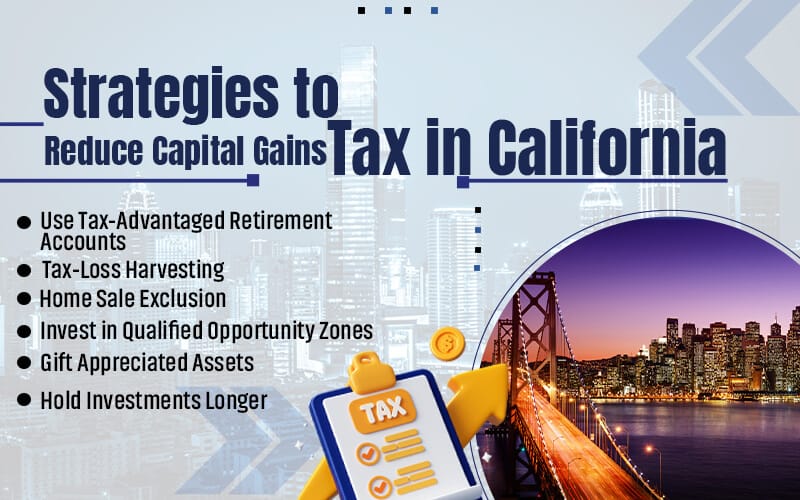
Navigating the landscape of California capital gains tax is crucial for investors, property owners, and entrepreneurs in the state. Unlike the federal tax system, California treats all capital gains as ordinary income, often resulting in higher tax bills for those who realize investment profits. Understanding how capital gains are taxed in California can help you avoid costly surprises and improve your long-term financial outcomes.
How Are Capital Gains Taxed in California
California state does not distinguish between short-term and long-term capital gains. Instead, the state taxes all capital gains—regardless of how long the asset was held—as regular income. This approach can lead to higher tax liabilities compared to federal tax treatment, where long-term capital gains benefit from reduced rates. If anything appears too complicated for you, avail professional tax services Playa Del Rey.
Key Points:
- Applicable Assets: Tax applies to gains from selling stocks, bonds, cryptocurrency, real estate, and business interests.
- Exceptions: Capital gains from tax-advantaged accounts like IRAs or 401(k)s may be tax-deferred or tax-free.
- Home Sale Exclusion: Up to $250,000 (single) or $500,000 (married) in gains from the sale of a primary residence may be excluded, provided IRS residency and ownership requirements are met.
2025 California Income Tax Brackets
California employs a progressive tax system, meaning the rate increases as income increases. These tax brackets also apply to long term capital gains.
Taxable Income (Single) | Tax Rate |
$0 – $10,412 | 1% |
$10,413 – $49,223 | 2% |
$49,224 – $62,797 | 4% |
$62,798 – $322,499 | 6% |
$322,500 – $414,999 | 9.3% |
$415,000 – $1,000,000 | 10.3% |
$1,000,001 – $2,000,000 | 12.3% |
| Over $2,000,000 | 13.3% |
Note: A 1% Mental Health Services Tax applies to income over $1 million, raising the top marginal rate to 13.3%.
Federal vs. California Capital Gains Taxes
While California taxes all capital gains as ordinary income, the federal government distinguishes between short-term and long-term capital gains, offering preferential rates for long-term holdings on California capital gains tax.
Federal Long-Term Capital Gains Tax Rates (2025):
- 0% Rate: Up to $48,350 (single), $96,700 (married filing jointly)
- 15% Rate: $48,351 – $533,400 (single), $96,701 – $600,050 (married filing jointly)
- 20% Rate: Over $533,400 (single), $600,050 (married filing jointly)
California’s Tax Treatment:
- All capital gains are taxed as ordinary income.
- No distinction between short-term capital gains tax and long-term gains.
Example Comparison:
| Income Level | Federal Rate | California Rate | Total Tax Rate |
| $100,000 | 15% | 6% | 21% |
| $250,000 | 15% | 9.3% | 24.3% |
| $500,000 | 20% | 9.3% | 29.3% |
| $1,000,000 | 20% | 13.3% | 33.3% |
Strategies to Reduce Capital Gains Tax in California

How much are capital gains in California? Given the significant tax burden that capital gains can create, several strategies are available to reduce your taxable income or defer the tax liability:
- Use Tax-Advantaged Retirement Accounts:
- 401(k)s and Traditional IRAs defer taxes until withdrawal—often in a lower bracket.
- Roth IRAs offer tax-free withdrawals, including gains, after age 59½ if rules are met.
- Tax-Loss Harvesting:
- Offset gains by selling assets at a loss.
- Losses can offset gains dollar for dollar.
- Deduct up to $3,000/year from ordinary income.
- Carry forward indefinitely.
- Home Sale Exclusion:
- Exclude up to $250K (single) or $500K (married) in gains on the sale of your primary home.
- Must have owned and lived in the home for 2 of the last 5 years.
- Invest in Qualified Opportunity Zones:
- Defer or eliminate gains by reinvesting in designated low-income areas.
- Hold for 10 years to exclude gains on new investments entirely.
- Gift Appreciated Assets:
- Transfer assets to a family member in a lower tax bracket.
- Can reduce both income tax and estate tax exposure.
- Hold Investments Longer:
- While California doesn’t favor long-term holding, the federal government does.
- Keeping assets longer than a year qualifies for reduced federal rates of 0%, 15%, or 20%.
The Takeaway
California capital gains tax laws are among the most aggressive in the country. With no distinction for long-term gains, high state rates, and a 1% surtax for millionaires, effective tax planning is essential. By using retirement accounts, loss harvesting, strategic gifting, and Opportunity Zone investments, individuals and businesses can significantly reduce their overall tax liability. Understanding where state and federal rules diverge is key to building—and keeping—wealth in 2025 and beyond. If you need help, don’t hesitate to work with a Beverly Hills CPA.
Must Read: Rental Income Tax Rates Made Simple: Guide for Property Owners
FAQs
Q1. Are there any exceptions to California’s capital gains tax?
A1. Yes, capital gains from tax-advantaged accounts like IRAs or 401(k)s may be tax-deferred or tax-free. Additionally, gains from the sale of a primary residence can be excluded up to certain limits, provided you meet the eligibility requirements.
Q2. What are the income thresholds for the highest capital gains tax rate in California?
A2. The highest tax rate of 13.3% applies to individuals with taxable income exceeding $1 million. Additionally, a 1% Mental Health Services Tax applies, which further increases the rate for income above this threshold.
Q3. Can I offset capital gains with losses in California?
A3. Yes, you can use tax-loss harvesting to offset capital gains by selling assets at a loss. Losses can offset gains dollar-for-dollar and can also reduce your taxable income by up to $3,000 per year.
Q4. How does California tax capital gains on real estate?
A4. California taxes capital gains on real estate as ordinary income, with no special tax treatment for long-term holdings. However, you may qualify for up to $250,000 (single) or $500,000 (married) exclusion if you meet the primary residence requirements.
Q5. Does California allow any special tax breaks for Opportunity Zone investments?
A5. Yes, California offers tax incentives for investments in Qualified Opportunity Zones. Gains can be deferred or potentially eliminated, particularly if the investment is held for 10 years, allowing for tax-free growth on new investments.



